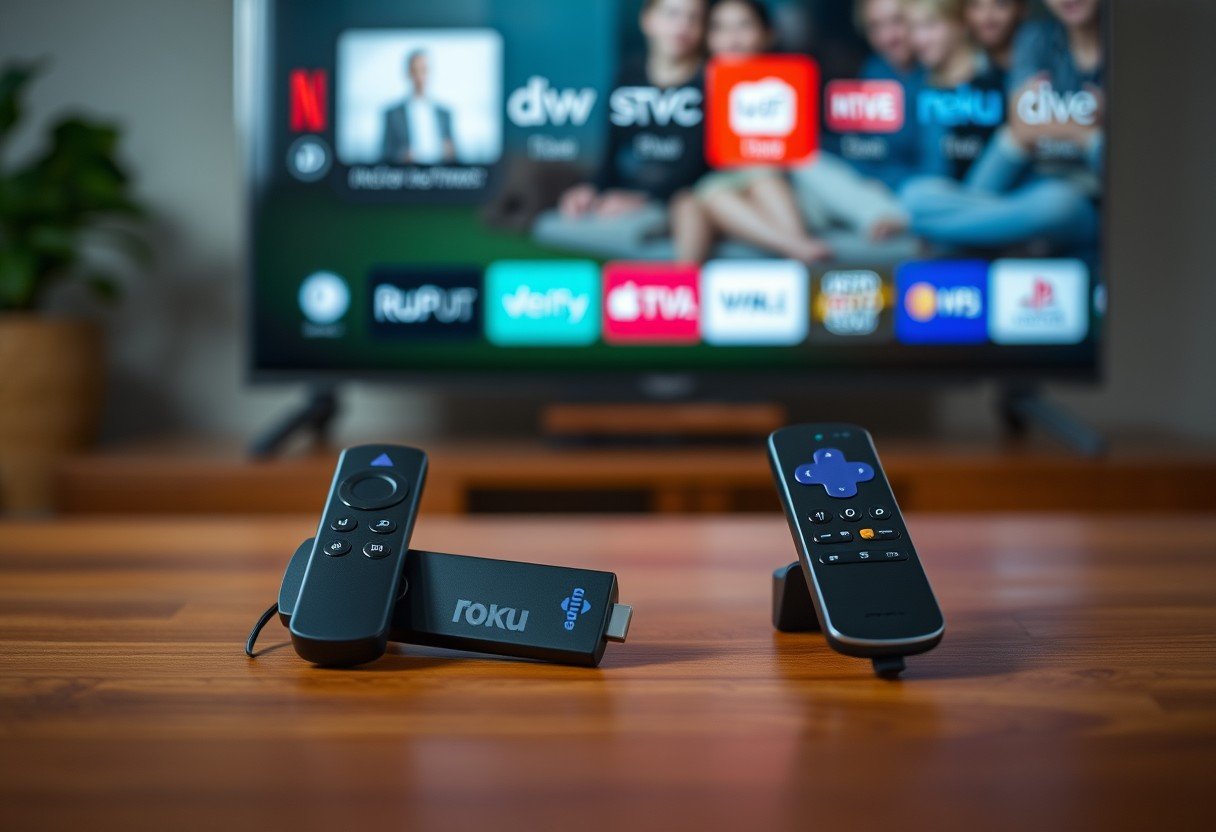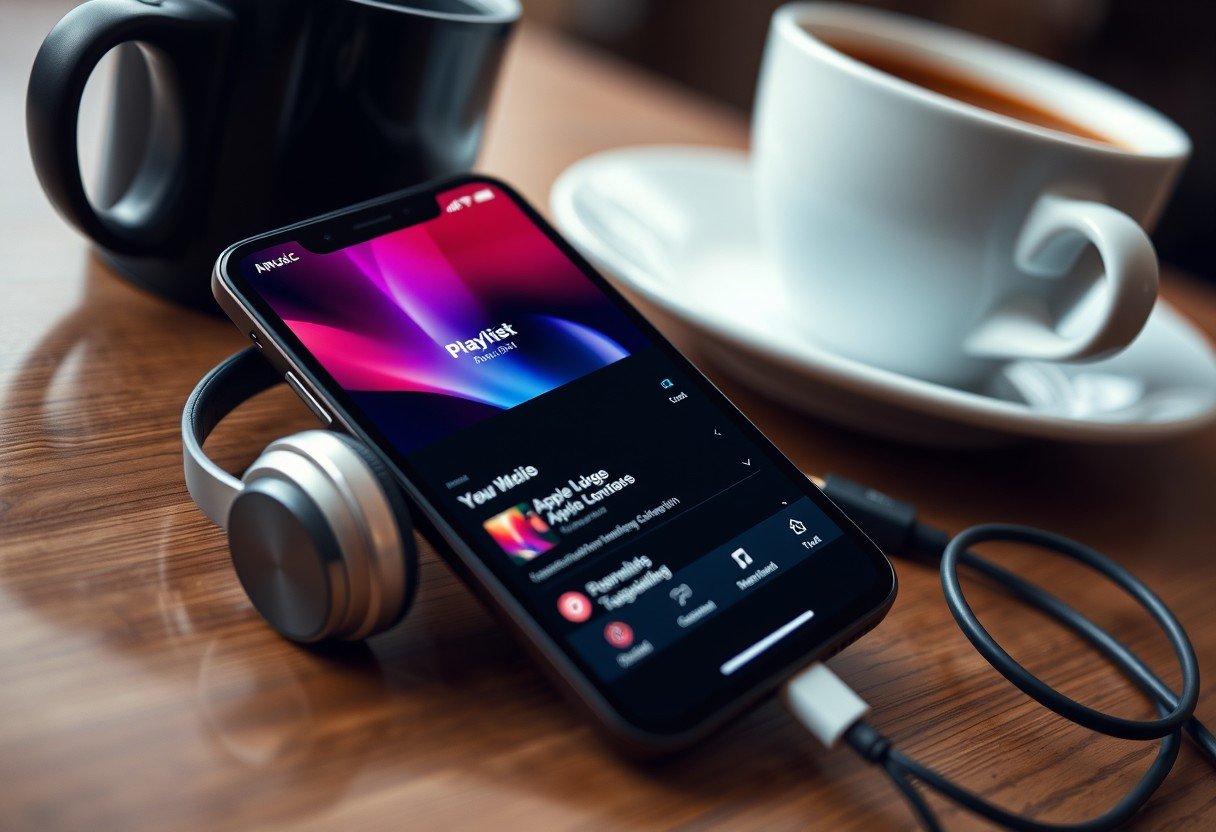Choosing the right streaming device can be confusing, but it doesn’t have to be. Both the Amazon Firestick and Roku transform your TV into a smart entertainment hub, but they do so in different ways. Understanding their core differences in user interface, content availability, and special features is key to picking the one that best fits your viewing habits and home setup. This guide will break down everything you need to know to make a confident choice.
User Interface and Ease of Use
The first thing you will notice about any streaming device is its home screen. This is where Firestick and Roku take very different approaches, and your personal preference will play a big role in which one you find more appealing.
The Amazon Firestick interface is dynamic and heavily focused on content discovery, especially content from Amazon Prime Video. It uses a modern, tile-based layout that suggests shows and movies based on your viewing history. If you are already an Amazon Prime member, this integration feels seamless and helpful. However, for those outside the Amazon ecosystem, it can sometimes feel like a constant advertisement for Amazon’s services.
Roku, on the other hand, is famous for its simple and straightforward user interface. It presents your apps in a clean grid, much like the home screen of a smartphone. This neutral approach does not favor any specific streaming service. Many users, especially those who are not tech-savvy, praise Roku for its intuitive and clutter-free design. You simply pick the channel you want and start watching, making it incredibly easy to navigate.
Ultimately, the better interface comes down to what you value more. Do you want a device that actively suggests new content and integrates with a larger ecosystem, or do you prefer a simple, no-frills grid of your favorite apps?
Content and Channel Selection
While both platforms support all the major streaming giants like Netflix, Hulu, and Disney+, their overall content libraries and philosophies differ. Your access to niche channels and free content can vary significantly between the two.
Roku has long been the market leader when it comes to the sheer number of available channels, often called “apps” on other platforms. It boasts one of the largest app stores for streaming devices. This means if you are looking for a less common or specialty streaming service, you are more likely to find it on Roku.
Both devices offer exclusive content that can sway your decision. It is important to consider which of these exclusives matter most to you.
- Firestick: Offers deep integration with Amazon Prime Video, giving you easy access to Amazon Originals like “The Boys” and “The Marvelous Mrs. Maisel.” It also integrates with Amazon’s Luna cloud gaming service.
- Roku: Features The Roku Channel, a surprisingly robust platform that offers a rotating library of free, ad-supported movies and TV shows, as well as live TV channels.
This makes Roku a fantastic option for cord-cutters looking to maximize their free entertainment. Firestick’s strength lies in its seamless connection to the vast Amazon content library you may already be paying for with a Prime membership.
Performance and Streaming Quality
A great interface and content library mean nothing if the device is slow and laggy. Both Firestick and Roku offer a range of models that support everything from basic HD to stunning 4K Ultra HD with HDR for vibrant colors and contrast.
Generally speaking, when comparing similarly priced models, the Firestick often has a slight edge in processing power. This can result in faster app load times and smoother navigation, especially on the higher-end Fire TV Stick 4K Max. You might notice apps launching a split-second quicker and less buffering when you start a show.
However, Roku’s performance is still excellent. Its lightweight operating system is highly efficient, meaning even its more affordable devices provide a snappy and responsive experience. The difference in speed is often minimal in day-to-day use and might not be noticeable to the average user. Your internet connection speed will have a much bigger impact on streaming quality than the minor performance differences between these devices.
Voice Control and Smart Features
In today’s smart home era, voice control is more than just a novelty; it is a core feature. This is an area where the Amazon Firestick clearly stands out, thanks to the power of Alexa.
Every Firestick remote comes with Alexa built-in. This is not just for searching for movies. You can ask Alexa to control your smart home devices, check the weather, order a pizza, or answer general questions. Firestick effectively turns your TV remote into a smart home hub. This deep integration is a massive selling point for anyone invested in the Amazon or Alexa ecosystem.
Roku also offers voice control on most of its devices, and it works very well for its intended purpose: finding content. You can search for actors, movie titles, or genres, and Roku will show you where you can watch it across all your installed apps. However, it does not have the broad capabilities of a full-fledged digital assistant like Alexa. It cannot control your smart lights or give you a news briefing.
Pricing and Overall Value
Both Firestick and Roku offer a range of devices at various price points, ensuring there is an option for nearly every budget. While their prices are often competitive, their value proposition can differ.
Roku is known for providing excellent entry-level options. Its cheapest models, like the Roku Express, provide a reliable HD streaming experience for a very low price. This makes it an easy choice for a secondary TV or for those on a tight budget. Firestick’s entry-level device, the Fire TV Stick Lite, is similarly priced and also offers a great experience. As you move up the product line, prices remain comparable for 4K and premium models.
To give you a better idea, here is a general comparison of their popular models. Note that prices can fluctuate.
| Feature Tier | Amazon Firestick Model | Roku Model |
|---|---|---|
| Entry-Level HD | Fire TV Stick Lite | Roku Express |
| Standard 4K | Fire TV Stick 4K | Roku Streaming Stick 4K |
| Premium 4K | Fire TV Stick 4K Max | Roku Ultra |
The true value depends on your needs. If you want the most affordable way to get started with streaming, Roku often has the edge. If you value the added functionality of a smart assistant like Alexa, the Firestick provides incredible value beyond just streaming.
Setup and Customer Support
Getting started with either device is incredibly simple. The setup process for both Firestick and Roku is designed to be user-friendly, even for those who are not comfortable with technology. You just plug the device into your TV’s HDMI port, connect it to power, and follow the on-screen instructions to connect to your Wi-Fi and log in to your accounts.
When it comes to getting help, both companies provide solid support. Amazon’s customer service is a major advantage for Firestick users. You can easily access support through the Amazon website or app, connecting with a representative via chat or phone call for direct assistance with any issues.
Roku’s support is primarily handled through its extensive online help center, which includes detailed troubleshooting guides and FAQs. It also has a large community forum where users can help each other solve problems. While direct contact with a support agent is available, many users find their answers through the self-help resources.
Frequently Asked Questions
What is the main difference between Firestick and Roku?
The biggest difference lies in their user interface and ecosystem. Firestick is deeply integrated with Amazon’s services and Alexa, offering a content-focused experience. Roku provides a simpler, more neutral app-grid interface that does not prioritize any single service.
Which device is better for someone who is not tech-savvy?
Roku is widely considered more user-friendly for beginners. Its straightforward grid layout of apps is very intuitive and easy to navigate without the extra layers of content recommendations found on Firestick.
Do I need an Amazon Prime membership to use a Firestick?
No, you do not need a Prime membership to use a Firestick. You can still download and use apps like Netflix and YouTube. However, having a Prime membership significantly enhances the experience by integrating Prime Video content directly onto the home screen.
Which streaming device has more free content?
Roku generally offers more accessible free content, primarily through The Roku Channel, which features a large, rotating library of free movies and TV shows. It also supports a vast number of other free, ad-supported channels.
Can I control my smart home devices with these streamers?
The Amazon Firestick is far superior for smart home control. With Alexa built into the remote, you can use your voice to control compatible smart lights, thermostats, cameras, and more, making it a central part of a smart home.
Is it possible to use both a Firestick and a Roku on the same TV?
Yes, absolutely. As long as your TV has more than one available HDMI port, you can plug a Firestick into one and a Roku into another. You can then switch between the two inputs using your TV’s remote.






Leave a Comment